Chifle facts for kids
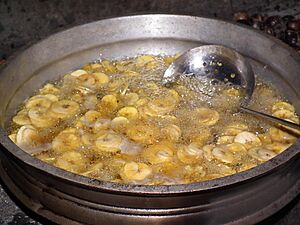
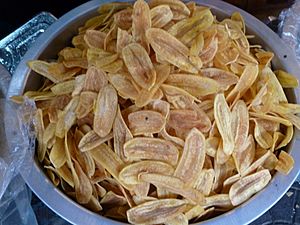

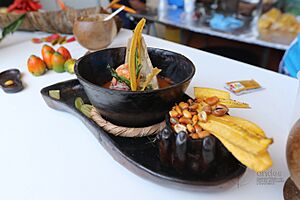
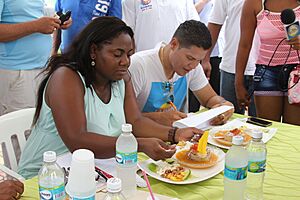
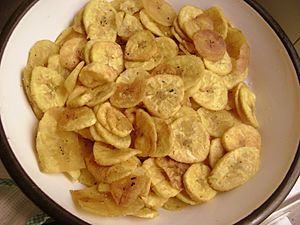
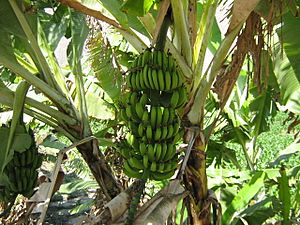
Chifles are tasty fried chips made from plantains. They are a popular snack food or side dish in countries like Ecuador, Thailand, and northern Peru. Think of them like potato chips, but made from a special type of banana!
Contents
Chifles in Ecuador
In Ecuador, chifles are a big part of the local food. People often eat them with breakfast. They are also served with hot soups like encebollado and cold dishes like ceviche. You can find chifles that are salty or sweet. Big brands like Banchis in Quito and Tortolines in Guayaquil make them. Many other brands are enjoyed across the country.
How Chifles are Made
Making chifles is quite simple!
- First, the peel is carefully removed from a plantain.
- The plantain is then put into salt water right away.
- Next, it's cut into very thin slices. These can be round, like regular chips, or long strips.
- The thin slices are cooked in hot oil until they turn golden and crispy.
- Finally, they are seasoned with salt.
Some chifles are made in factories and sold in bags. These often come in sweet, salty, or spicy flavors. People traveling from South America loved chifles so much that they became popular around the world. In the early 1800s, travelers leaving the port of Guayaquil were given chifles instead of bread with their meals. This helped chifles become known as a great snack food.
Chifles in Peru
In Peru, chifles are a special food from the Piura Region. They are made from fried slices or strips of plantains. These can be either ripe (for a sweet taste) or green (for a savory taste). They are seasoned with salt.
In Piura, chifles are traditionally fried over wood fires. They use wood from the algorrobo blanco tree, which gives the chifles a unique smell and flavor. Depending on if the plantain is ripe or green, the chifles will taste sweet or savory. Sometimes, they are served with cancha serrana (roasted corn) or shredded cecina (pork jerky).
A group called APROCHIP (Piura Chifle Producers Association) is working to make chifles a "flagship product" of Peru. This means they want chifles to be recognized as an important national food.
What Does "Chifle" Mean?
The word "chifle" has an interesting history. Some people think it comes from an old Arabic word, "chofre." This word meant the blade of a sword. The name might have come from how plantains were sliced into circles with a blade.
Another idea is that "chifle" means "horn" or "antler." This could be because of how some chifles look. A third idea is that the name comes from the whistling sound people sometimes make when they eat the crispy snack!
Similar Snacks Around the World

Many tropical countries where plantains grow have their own version of this snack.
- In Bolivia, they are called chipilo.
- In Guatemala, they are known as plataninas.
- In South India, they are parndh chips.
- In Cuba, they are mariquitas (which means "ladybugs").
- In Puerto Rico, they are platanutres.
- In the Dominican Republic, they are platanitos.
- In Venezuela, they are often called tostones or tostoncitos.
Today, you can even find "plantain chips" in Europe. They are produced and sold by companies like Fyffes from Ireland.
See also
- In Spanish: Platanitos para niños


